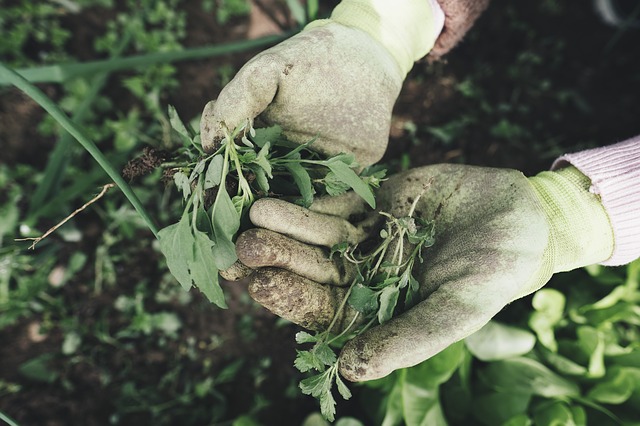
Organic gardening may provide you with a great way to relax and enjoy your time, but also headaches as well. The following collection of tips will assist you in becoming an accomplished organic gardener.
Clay soil makes working with a shovel difficult. The clay is hard and sticks to the shovel. Use a thin coat of floor or car wax on your shovel, then buff it with a nice clean cloth to make dealing with clay soil easier. By waxing the shovel head, the clay will not be able to adhere to the surface.
Be diligent in your garden.Weeds can take a healthy garden faster than you think. White vinegar can be used as a good solution. White vinegar can kill the weeds! If you’re annoyed with pulling up weeds manually, make a white vinegar solution and keep it handy for a quick spray when needed.
Pre-soak seeds through the night in a dark place. This hydrates your seeds to be hydrated and it will cause them to grow faster. The seeds will then have a greater chance of maturing and blossoming.
Plant a variety of flowers to keep your flower garden colorful and interesting. Annuals and biennials can add excitement and interest to your flower garden every season. Fast growing biennials and annuals will brighten a garden and permit you to change looks from one season to another. They can be used to fill in gaps in your garden between the perennials or shrubs so your garden looks fuller. Notable collections include sunflower, marigold, hollyhock, rudbeckia, cosmos, and petunia.
When mowing your lawn do not cut it too closely to the dirt. If you leave a bit more height, the roots grow further into the ground, which makes the grass less prone to drying and other hazards. Short grass is more prone to getting dried out and dead grass.
Most vegetables need at least that much sun exposure to grow well and quickly. Some flowers also have the same thing.
If you see mildew that is powdery, stay away from expensive chemicals to treat it. All you need to do is mix baking soda with a tiny bit of liquid soap in with some water. Spray this mix on your plants every week and the mildew should go away. No damage will occur to your plants, and the baking soda is mild and efficient.
Make a landscaping plan before you dig your garden. This will assist you in recognizing your tiny plants when they begin to sprout.
Protect your tender deciduous shrubs from harsh elements. Tie the tops together, and then use a sheet or blanket to cover the wigwam loosely. This method is superior to covering plants in plastic, because air can still circulate, which prevents rotting.
When winter arrives, you could save some plants by placing them inside your house. Think about saving your resistant plants or the expensive ones. When you dig up the plant, carefully avoid the roots then place it in a container.
Moisture on plants is a sure way to attract parasites and parasites. Fungi are a very common problem in the world of gardening. It is possible to get rid of fungi after it appears with anti-fungal sprays, but the key is to treat your garden before any problems arise.
A good green garden starts from the seeds and not from the plants. The most “green” way to create a new garden is to start with seeds. The plastic used in nurseries often end up in landfills, so it is best to start with the seeds or buy from nurseries who use organic materials in packaging their plants.
When partaking in gardening activities, particularly in the autumn months, keep an eye on those stink bugs. They like fruits, as well as peppers, beans and tomatoes. Proper measures should be taken in order to ensure minimal damage to your crops.
Purchase an inexpensive horticulture kneeling pad, and a kneeling stool to use in your garden.Spending lots of time close to the ground while working tends to be hard on your knees, so a lightweight and portable garden stool will make horticulture more comfortable. Gardening also requires transporting heavy objects and lots of dirt, so a wheelbarrow makes for a wise investment.
Beneficial Insects
Try growing wheat grass or cat grass in the area of the plants your cat wants to eat. Additionally, use your cat’s keen sense of smell to your advantage. Citrus fruit peels and mothballs both smell horrible to cats, so put them on the soil near the plants your cat likes to eat.
Don’t use broad-spectrum pesticides that aren’t meant to kill specific types of garden pests. These kinds of pesticides also kill the beneficial insects that eat the pests. Beneficial insects are more susceptible to toxic pesticides than their annoying counterparts, so if the good bugs are eliminated, allowing the population of bad pests to multiply. This might result in you using even more pesticides to fix the pests.
Use common sense when watering the garden. Use a type of soaker hose so that you don’t need to do individual waterings with the hose nozzle, or a watering can that needs to be refilled repeatedly. Keep water pressure on your hose low so it doesn’t spray up onto the plants’ leaves. Let it water the plants for a while you do other things.
When you grow veggies in a garden, you need to ensure they get at least six hours of good sunlight each day. Most vegetables that can be grown need that much sun to grow well and quickly. This arrangement will also benefit some types of flowers.
Organic horticulture is a more involved form of gardening than is often realized. Your hard work will pay off once your garden grows and you can eat healthy vegetables. Follow the tips and you can increase your gardening skills.